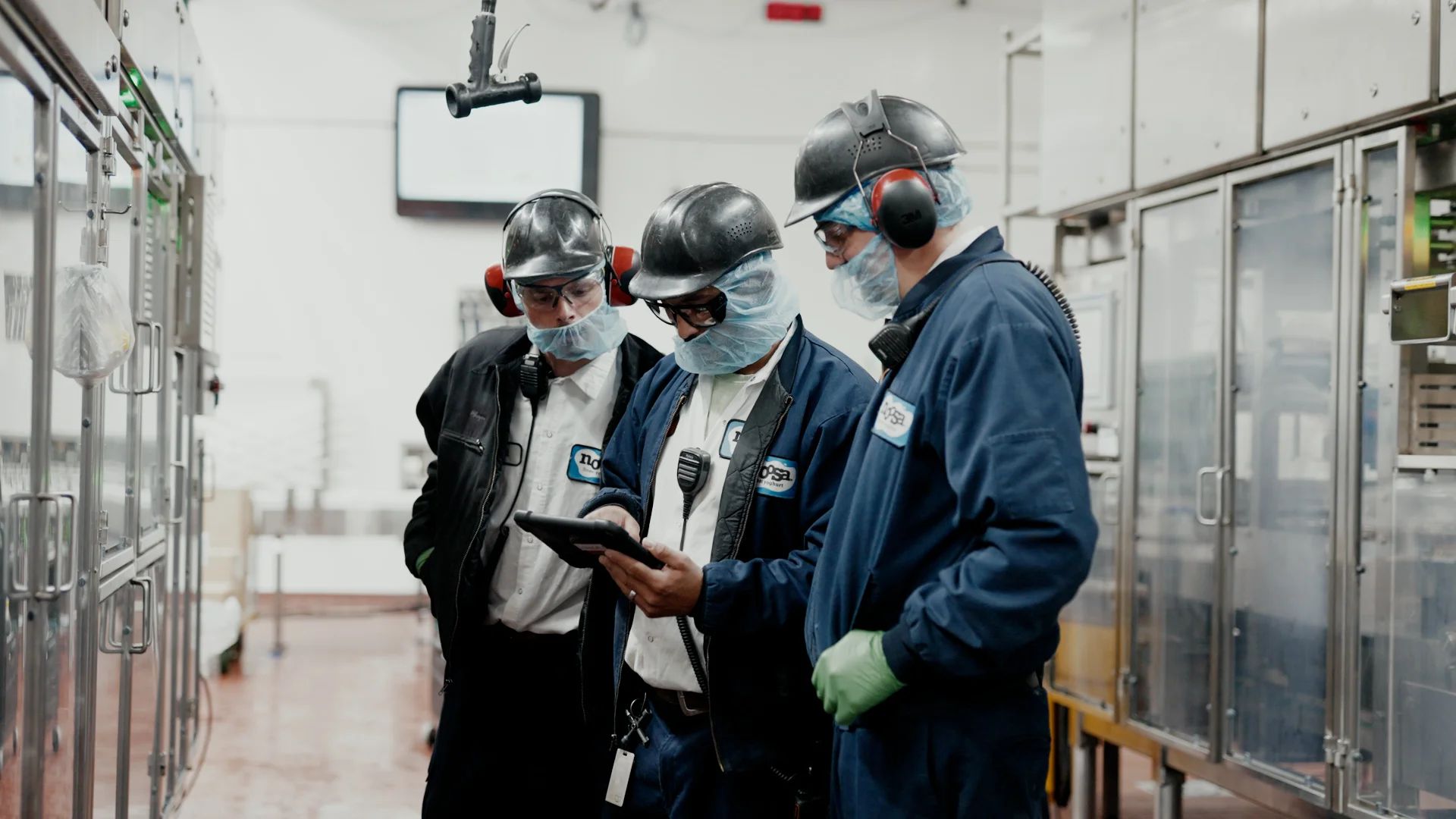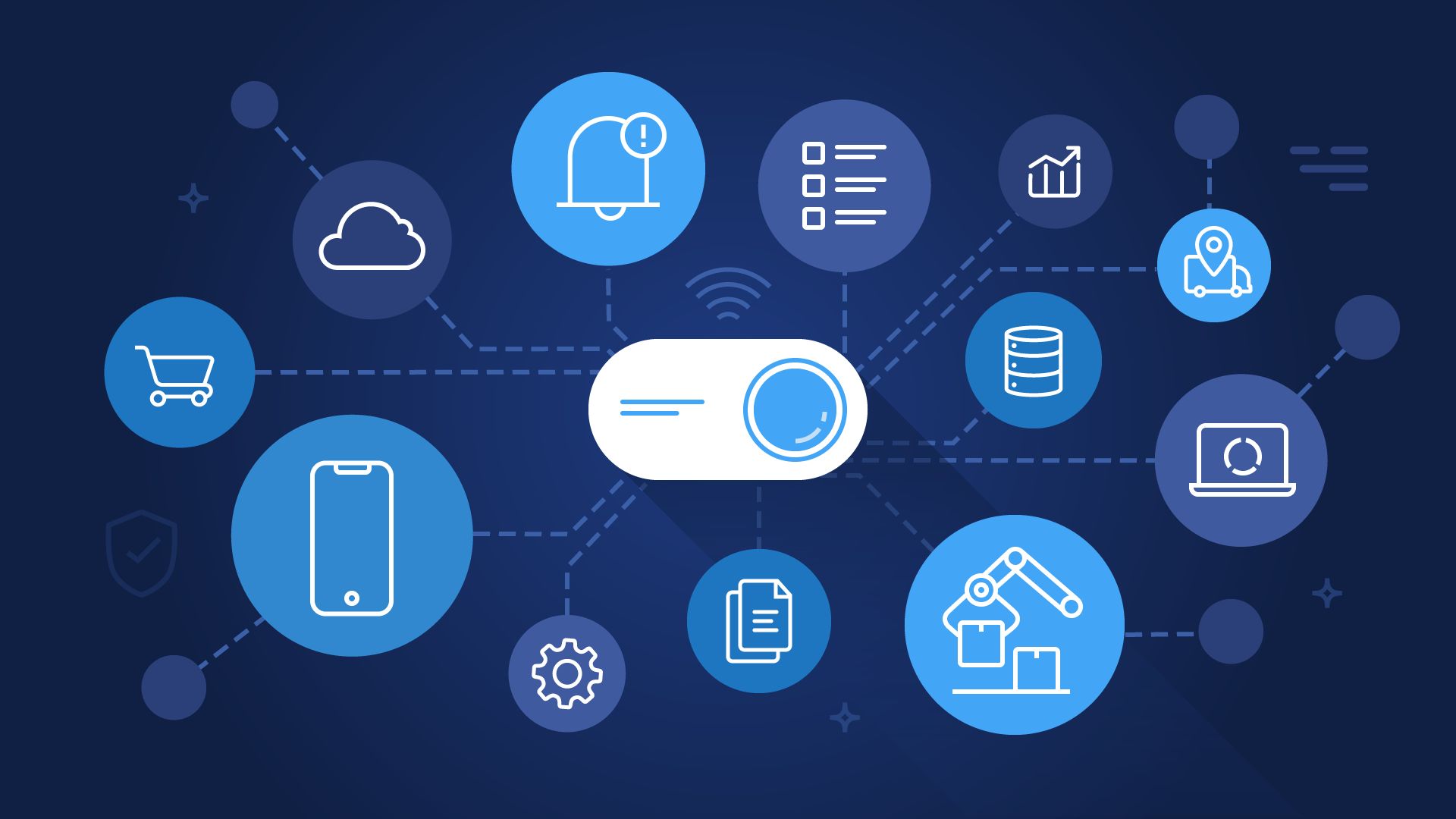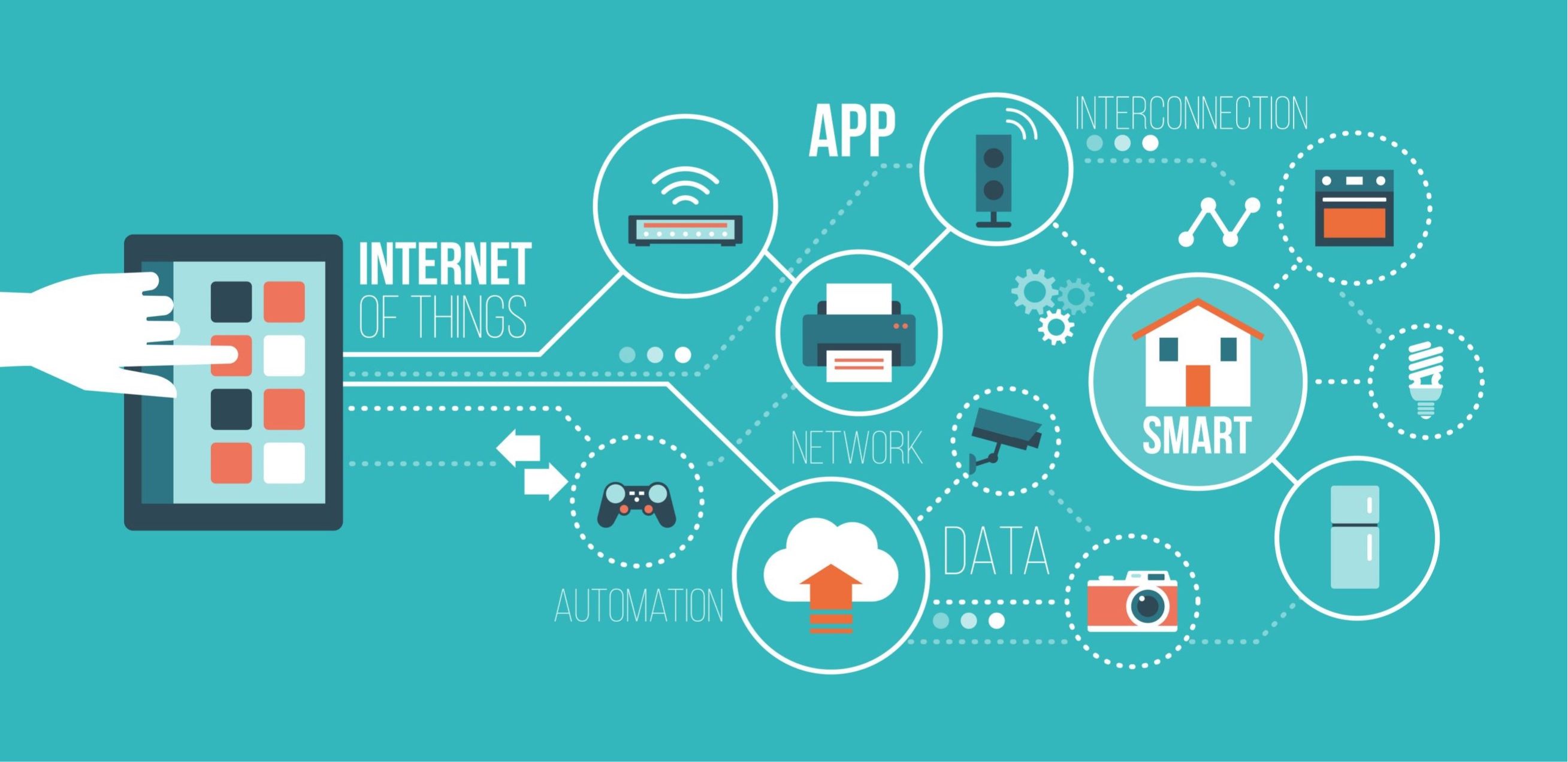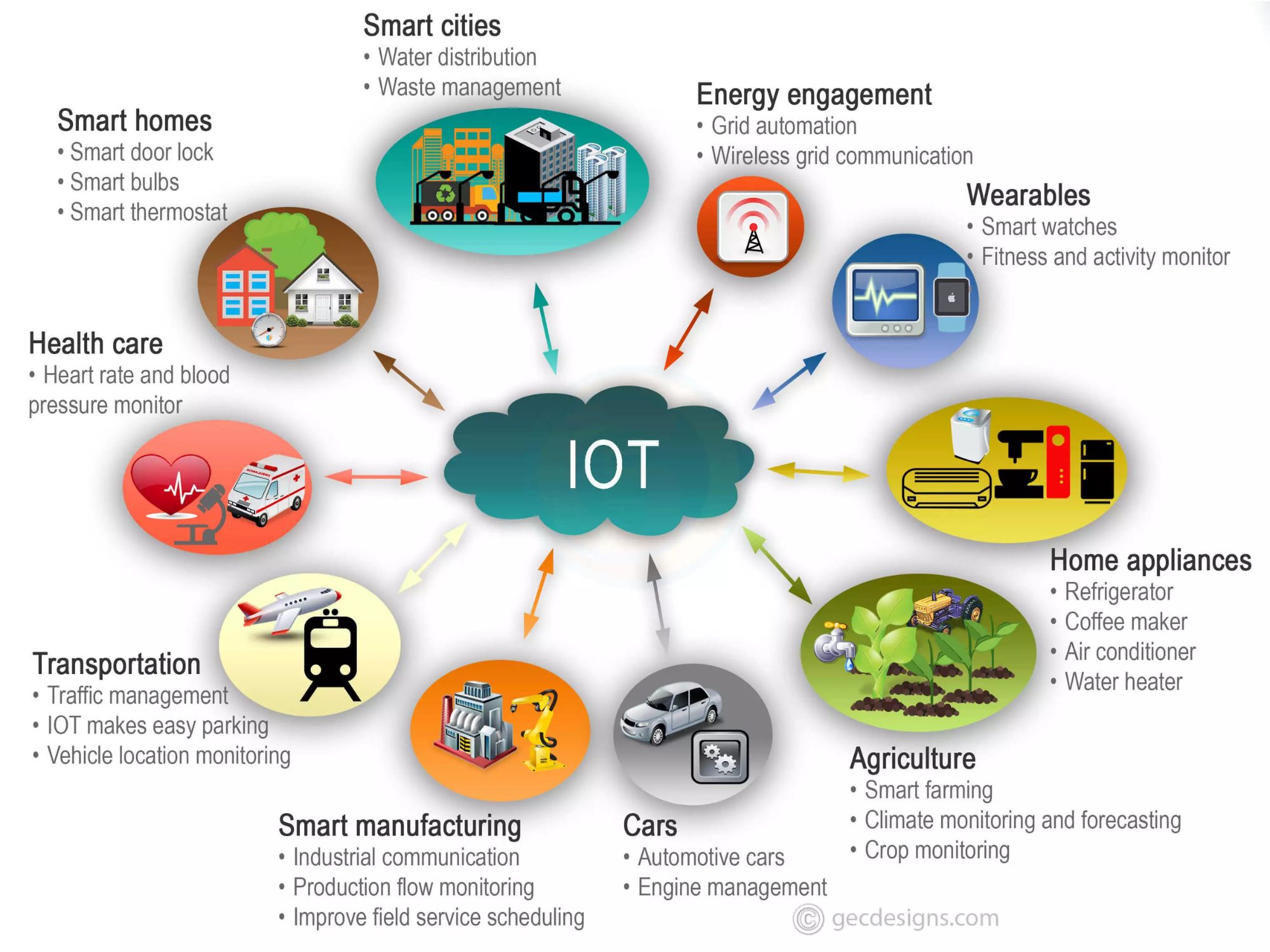Introduction
Welcome to the world of IoT (Internet of Things), where various devices and sensors are interconnected and communicating with each other to bring seamless integration and automation to our daily lives. In recent years, IoT has emerged as a game-changer in different industries, including manufacturing. With IoT devices playing a crucial role in optimizing processes and increasing efficiency, they have become indispensable for minimizing downtime in manufacturing plants.
But what exactly is IoT? In simple terms, IoT refers to the network of physical devices, vehicles, appliances, and other objects embedded with sensors, software, and connectivity that enables them to collect and exchange data. These devices can seamlessly connect and communicate with each other, enabling real-time data collection and analysis.
Minimizing downtime is of utmost importance in a manufacturing plant as it directly affects productivity, costs, and customer satisfaction. Even a small disruption in the production line can lead to significant losses and delays. Traditionally, addressing downtime issues required manual intervention, inspections, and reactive maintenance, which were time-consuming and inefficient.
Here comes the role of IoT devices, which offer proactive solutions to prevent downtime and optimize manufacturing processes. By harnessing the power of IoT, manufacturing plants can transform their operations and ensure smooth functioning, thereby reducing costs, increasing productivity, and enhancing overall efficiency.
This article aims to explore the ways in which IoT devices can help minimize downtime in a manufacturing plant. From remote monitoring and predictive maintenance to real-time data collection and analysis, automated notification systems, enhanced supply chain management, and improved communication and collaboration, we will delve into the various applications of IoT devices in minimizing downtime.
So, let’s embark on this journey to discover how IoT devices are revolutionizing the manufacturing industry and paving the way for seamless operations and minimal downtime.
What is IoT?
The Internet of Things (IoT) refers to the interconnection of physical devices, vehicles, appliances, and other objects through the internet, enabling them to collect and exchange data. These devices are embedded with sensors, software, and connectivity, allowing them to communicate with each other and perform specific tasks without human intervention. IoT has gained immense popularity in recent years and has become a revolutionary technology in various industries, including manufacturing.
IoT devices work by collecting data from their surroundings using sensors and transmitting it to a centralized system, where it is analyzed and used to make informed decisions. This data can provide valuable insights into processes, patterns, and inefficiencies, enabling businesses to optimize operations and improve efficiency.
One of the key features of IoT devices is their ability to connect and communicate with each other seamlessly. This network of interconnected devices creates an ecosystem where information can flow freely, allowing for real-time data exchange and analysis.
The applications of IoT in manufacturing are vast and diverse. For example, in a smart factory, IoT devices can monitor and control various aspects of the production line, including machine performance, environmental conditions, and energy consumption. This enables manufacturers to identify and address issues proactively, minimizing downtime and maximizing productivity.
Furthermore, IoT devices enable manufacturers to implement predictive maintenance strategies. By continuously monitoring machine performance and analyzing data trends, IoT devices can detect potential faults and notify maintenance teams before a breakdown occurs. This preventive approach reduces unplanned downtime and ensures that machinery remains in optimal condition.
Additionally, IoT devices play a crucial role in inventory management and supply chain optimization. By tracking inventory levels in real-time and automatically placing orders when stock runs low, manufacturers can avoid production delays caused by material shortages.
In summary, IoT is a transformative technology that is revolutionizing the manufacturing industry. By connecting devices, collecting and analyzing data, and enabling proactive decision-making, IoT devices help manufacturers minimize downtime, optimize processes, and achieve higher levels of efficiency and productivity.
The Importance of Minimizing Downtime in a Manufacturing Plant
In a manufacturing plant, downtime refers to the period when production is halted or interrupted due to equipment breakdown, maintenance activities, or other unexpected events. Downtime can have significant impacts on the overall productivity, operational costs, and customer satisfaction of a manufacturing facility. Therefore, minimizing downtime is of utmost importance for manufacturers.
Downtime directly affects productivity levels, as every minute that the production line is inactive leads to lost output and potential revenue. Even a short period of unexpected downtime can result in delays in fulfilling orders, missed deadlines, and dissatisfied customers. This can damage a manufacturer’s reputation and lead to customer attrition.
Furthermore, downtime also translates into increased operational costs. When production machinery is not running, manufacturers still have to bear fixed costs like overhead expenses and labor costs, without generating any revenue. Additionally, downtime can lead to increased maintenance and repair costs if the issues causing the downtime are not addressed promptly.
Another crucial aspect impacted by downtime is the supply chain. Manufacturing plants operate within intricate supply chains, where one disruption can create a ripple effect, impacting not just the manufacturer, but also suppliers and customers downstream. Delays caused by downtime can result in stockouts, missed delivery dates, and negative consequences for interdependent businesses.
Moreover, downtime interrupts the flow of work and creates inefficiencies in production processes. When machines are not operating, tasks get delayed, and work-in-progress inventory accumulates. This can lead to congestion, lower throughput, and increased lead times, further amplifying the negative impacts of downtime.
Minimizing downtime is crucial for maintaining a competitive edge in the manufacturing industry. In today’s fast-paced business environment, manufacturers must strive to operate at optimal efficiency levels to meet customer demands and stay ahead of the competition. By minimizing downtime, manufacturers can boost productivity, reduce costs, improve overall operational efficiency, and enhance customer satisfaction.
In the next sections, we will explore how IoT devices play a pivotal role in minimizing downtime in a manufacturing plant, helping manufacturers prevent and address issues proactively, optimize operations, and achieve higher levels of efficiency.
How IoT Devices can Help Minimize Downtime
IoT devices offer a wide range of capabilities that can help manufacturers minimize downtime and optimize their operations. By harnessing the power of connectivity, data collection, and real-time analytics, IoT devices enable proactive maintenance, efficient resource management, and streamlined communication within a manufacturing plant.
One of the key ways IoT devices can minimize downtime is through remote monitoring and predictive maintenance. With sensors embedded in machines and equipment, IoT devices can continuously collect data on performance parameters such as temperature, vibration, and energy consumption. This real-time data is analyzed using advanced algorithms to detect patterns that indicate potential faults or maintenance needs. By identifying issues in advance, maintenance teams can take corrective actions before a breakdown occurs, preventing unexpected downtime and minimizing disruption to the production line.
Real-time data collection and analysis are crucial in minimizing downtime. IoT devices provide a portal for collecting and transmitting data from various points in the manufacturing process, allowing for instant access to critical information. This data can be analyzed to identify bottlenecks, inefficiencies, or potential failure points. With real-time insights, manufacturers can make data-driven decisions, optimize processes, and avoid downtime caused by preventable issues.
Automated notification systems are another valuable feature of IoT devices that contribute to minimizing downtime. When anomalies or critical events are detected, IoT devices can automatically send notifications to relevant personnel, such as maintenance teams or supervisors. This immediate alert enables swift action to address the issue, reducing the response time and minimizing the impact of downtime. Furthermore, automated notifications can also be sent to suppliers or other stakeholders in the supply chain, allowing them to adjust their schedules accordingly and mitigate any potential disruptions.
Enhanced supply chain management is another way IoT devices contribute to downtime reduction. By leveraging IoT devices, manufacturers can gain visibility into the movement of goods, inventory levels, and demand patterns in real-time. This information enables more accurate forecasting, effective inventory management, and timely replenishment. With proactive supply chain management, manufacturers can avoid stockouts, production delays, and associated downtime.
Improved communication and collaboration within a manufacturing plant are also inherent benefits of IoT devices. Connected devices enable seamless communication between machines, systems, and personnel. This promotes better coordination and rapid response during unexpected events or potential downtime situations. With improved communication channels, issues can be quickly identified and resolved, minimizing the duration of downtime.
In summary, IoT devices play a crucial role in minimizing downtime in manufacturing plants by enabling remote monitoring and predictive maintenance, real-time data collection and analysis, automated notification systems, enhanced supply chain management, and improved communication and collaboration. By utilizing these capabilities, manufacturers can increase operational efficiency, reduce costs, and enhance overall productivity, ultimately ensuring minimal disruption to the production line and meeting customer expectations.
Remote Monitoring and Predictive Maintenance
One of the key ways IoT devices help minimize downtime in manufacturing plants is through remote monitoring and predictive maintenance. By utilizing sensors and connectivity, IoT devices enable real-time monitoring of machines and equipment, allowing manufacturers to proactively identify and address maintenance needs before they escalate into downtime-causing failures.
Remote monitoring involves the continuous collection of data from sensors embedded in machines and equipment. This data includes parameters such as temperature, pressure, vibration, and energy consumption. IoT devices transmit this data to a centralized system in real-time, where it can be analyzed to assess the health and performance of the assets.
Predictive maintenance leverages this data and applies advanced analytics and machine learning algorithms to detect patterns and anomalies. By comparing current data with historical data and established performance thresholds, IoT devices can identify potential issues or deviations from normal operating conditions. This proactive approach allows maintenance teams to take preventive actions based on the insights provided by IoT devices, avoiding sudden breakdowns and unplanned downtime.
One of the key benefits of remote monitoring and predictive maintenance is the ability to schedule maintenance activities based on actual asset conditions rather than on fixed time intervals. By monitoring machine health in real-time, manufacturers can prioritize maintenance tasks based on the actual need and plan downtime more strategically. This approach reduces unnecessary preventive maintenance activities and optimizes resource allocation.
Remote monitoring and predictive maintenance also enable remote troubleshooting and diagnostics. IoT devices can provide remote access to machines and equipment, allowing maintenance teams to analyze and diagnose issues without having to physically be present on the shop floor. This remote troubleshooting capability saves time and resources, as technicians can quickly assess the situation, identify the root cause, and determine the appropriate course of action.
Furthermore, IoT devices enable manufacturers to implement condition-based maintenance strategies. By continuously monitoring asset performance and health, manufacturers can identify early warning signs of potential failures and take preventive actions before the situation worsens. This eliminates the need for reactive maintenance, reduces the likelihood of unplanned downtime, and extends the lifespan of equipment.
In summary, remote monitoring and predictive maintenance made possible by IoT devices play a crucial role in minimizing downtime in manufacturing plants. By leveraging real-time data collection, advanced analytics, and remote access capabilities, manufacturers can proactively detect and address maintenance needs, prevent unexpected failures, and optimize maintenance schedules. This approach maximizes machine uptime, increases operational efficiency, and ultimately ensures a smooth and uninterrupted production process.
Real-time Data Collection and Analysis
Real-time data collection and analysis are pivotal in minimizing downtime in manufacturing plants, and IoT devices play a significant role in enabling this process. By collecting data from various sources in real-time and analyzing it on the spot, manufacturers can gain valuable insights into their operations, identify inefficiencies, and address potential issues before they result in downtime.
IoT devices are equipped with sensors that monitor and capture data from critical points in the manufacturing process. This data can include variables such as machine performance metrics, environmental conditions, energy consumption, and product quality parameters. With the connectivity provided by IoT, this data is transmitted instantly to a centralized system where it can be analyzed and acted upon.
Real-time data collection allows manufacturers to have up-to-the-minute visibility into their operations. By constantly monitoring key performance indicators, manufacturers can detect anomalies or deviations from expected levels and take immediate action. For example, if a machine’s temperature exceeds a predefined threshold, IoT devices can trigger an alert, notifying operators or maintenance teams so that they can intervene before a breakdown occurs.
Real-time data analysis is another critical aspect facilitated by IoT devices. By leveraging advanced analytics and machine learning algorithms, manufacturers can derive actionable insights from the vast amounts of data collected. For example, algorithms can identify patterns indicating impending machine failures or performance degradation. These insights enable manufacturers to proactively plan maintenance activities, replace components before they fail, and avoid unexpected downtime.
Furthermore, real-time data analysis enables manufacturers to optimize their processes and eliminate inefficiencies. By analyzing data streams from different machines and comparing their performance, manufacturers can identify bottlenecks, variations in production rates, or excessive energy consumption. Armed with this information, manufacturers can make data-driven decisions to optimize workflows, improve equipment utilization, and streamline operations, leading to increased productivity and ultimately minimizing downtime.
Real-time data collection and analysis also empower manufacturers to implement continuous improvement strategies. By leveraging IoT devices, manufacturers can monitor the impact of process changes or new operational techniques in real-time. This allows for rapid evaluation and adjustment of strategies, leading to quicker problem-solving and more efficient manufacturing processes.
In summary, real-time data collection and analysis made possible by IoT devices are instrumental in minimizing downtime in manufacturing plants. By capturing and analyzing data in real-time, manufacturers can gain valuable insights, detect anomalies, and take immediate actions to prevent breakdowns or address inefficiencies. This data-driven approach enhances operational efficiency, reduces downtime, and ensures a smooth and uninterrupted production process.
Automated Notification Systems
Automated notification systems are a powerful feature of IoT devices that greatly contribute to minimizing downtime in manufacturing plants. These systems enable immediate communication and alerts to relevant personnel when anomalies or critical events are detected, allowing for swift action to address issues and mitigate the impact of potential downtime.
IoT devices are equipped with sensors that continuously monitor various parameters, including machine performance, environmental conditions, and production metrics. When these sensors detect deviations from normal operating conditions or predefined thresholds, automated notification systems kick into action, sending alerts to the appropriate personnel.
These automated notifications can be sent via various channels, such as email, text messages, or push notifications to mobile devices. The choice of communication method depends on the urgency and severity of the situation, as well as the preferences of the recipients.
Automated notifications play a crucial role in minimizing downtime by enabling prompt responses to critical events. For example, if a machine’s sensor detects a sudden increase in temperature, an alert can be sent to maintenance personnel, allowing them to quickly investigate the issue and take necessary actions to prevent equipment failure or production delays.
By receiving real-time alerts, maintenance teams can promptly prioritize and address issues, reducing the response time and minimizing the duration of potential downtime. These notifications allow for efficient allocation of resources and immediate resolution of problems before they escalate further.
In addition to alerting maintenance personnel, automated notification systems can also notify other relevant stakeholders, such as supervisors, operators, or even suppliers. For instance, if a critical machine is experiencing issues, supervisors can be alerted, allowing them to allocate resources accordingly and make necessary adjustments to the production schedule.
Automated notifications can also be extended to suppliers or other partners within the supply chain. By notifying them about potential disruptions caused by machine failures or delays, they can take preventive measures to mitigate the impact on downstream production processes, thus preventing bottlenecks and minimizing any ripple effects.
Furthermore, automated notification systems facilitate proactive maintenance planning. By receiving alerts about upcoming maintenance tasks, maintenance personnel can schedule them in advance during planned downtime periods. This preventive approach ensures that maintenance activities are conducted at the most opportune times, reducing the disruption to production and minimizing overall downtime.
In summary, automated notification systems provided by IoT devices play a vital role in minimizing downtime in manufacturing plants. By enabling immediate communication and alerts to relevant personnel, these systems ensure swift responses to critical events, efficient allocation of resources, and proactive maintenance planning. The timely information provided by automated notifications enables manufacturers to mitigate potential downtime and maintain smooth and uninterrupted operations.
Enhanced Supply Chain Management
IoT devices play a crucial role in minimizing downtime in manufacturing plants by enhancing supply chain management. The interconnected nature of IoT devices allows for seamless data sharing and communication between manufacturers, suppliers, and other stakeholders within the supply chain. This enables better visibility, coordination, and optimization of the supply chain, ultimately reducing the risk of downtime.
Real-time data collection and analysis provided by IoT devices enable manufacturers to gain valuable insights into inventory levels, demand patterns, and production schedules. By having access to accurate and up-to-date information, manufacturers can make more informed decisions regarding materials sourcing, production planning, and order fulfillment.
With real-time inventory monitoring through IoT devices, manufacturers can ensure optimal inventory levels. By tracking stock levels in real-time, manufacturers can have better control over their inventory and avoid unexpected stockouts or overstock situations that can lead to production delays. IoT devices can automatically send alerts when inventory levels reach predefined thresholds, allowing manufacturers to take timely actions to prevent disruptions in the supply chain.
Moreover, IoT devices can facilitate automated ordering and replenishment processes. By integrating IoT devices with inventory management systems, manufacturers can automate the process of placing orders when stock levels reach a certain threshold. This eliminates the need for manual intervention and reduces the risk of human error, ensuring timely replenishment of materials and minimizing delays in production.
IoT devices also enable better coordination and collaboration between manufacturers and suppliers. By sharing real-time data on production schedules, demand forecasts, and quality metrics, manufacturers and suppliers can align their operations more effectively. This enhanced communication and collaboration improve the overall efficiency of the supply chain, reducing the risk of delays and downtime.
Furthermore, IoT devices can assist in tracking and monitoring the movement of goods within the supply chain. Through sensors and connectivity, manufacturers can collect data on the location, condition, and status of shipments in real-time. This enables manufacturers to identify potential bottlenecks, anticipate delivery delays, and take proactive measures to prevent disruptions in the supply chain.
IoT devices also facilitate traceability and quality management in the supply chain. By capturing data on production processes, environmental conditions, and quality metrics, manufacturers can ensure compliance with regulatory standards and resolve quality issues promptly. This proactive approach mitigates the risk of product recalls, avoids disruptions in the supply chain, and maintains customer satisfaction.
In summary, enhanced supply chain management made possible by IoT devices is crucial in minimizing downtime in manufacturing plants. By leveraging real-time data collection, automated ordering, improved coordination, and traceability, manufacturers can optimize inventory levels, streamline operations, and prevent disruptions in the supply chain. This ensures a smooth flow of materials and processes, reducing the risk of downtime and maximizing overall operational efficiency.
Improved Communication and Collaboration
Improved communication and collaboration are key benefits of IoT devices in minimizing downtime in manufacturing plants. By connecting machines, equipment, and personnel, IoT devices enable seamless communication, real-time information sharing, and efficient collaboration, ultimately reducing the risk of disruptions and maximizing productivity.
IoT devices provide a platform for effective communication and information exchange within a manufacturing plant. By connecting machines and equipment to a centralized system, IoT devices enable real-time data collection, analysis, and sharing. This allows operators, supervisors, and maintenance teams to access critical information instantaneously, facilitating timely decision-making and response to potential downtime situations.
Real-time communication through IoT devices enables quick troubleshooting and issue resolution. When a machine experiences a malfunction or requires immediate attention, operators can send alerts or notifications to maintenance teams or other relevant personnel. This immediate communication ensures that necessary actions are taken promptly, reducing the impact of downtime and preventing delays in production.
IoT devices also enable remote access and control of equipment, facilitating collaboration and troubleshooting. Maintenance teams can remotely access machines, analyze performance data, and diagnose issues without the need for physical presence on the shop floor. This capability streamlines the troubleshooting process, reduces response time, and enables efficient collaboration between operators and maintenance personnel, minimizing the duration of potential downtime.
IoT devices also enhance collaboration by facilitating information sharing across departments and teams within a manufacturing plant. Real-time data collected from various sources, such as machines, production lines, and quality control processes, can be shared with different stakeholders. This enables cross-functional collaboration and allows teams to work together to address issues, optimize processes, and prevent downtime.
Furthermore, IoT devices can facilitate collaboration and coordination between different manufacturing facilities or even across multiple locations. Through interconnected IoT devices, data from different plants can be shared and analyzed collectively. This enables manufacturers to identify bottlenecks, implement best practices, and align operations across various sites. Improved collaboration between different locations streamlines processes and ensures consistent quality, reducing the risk of downtime caused by inefficiencies or lack of coordination.
IoT devices also enhance communication and collaboration within the supply chain. Through real-time data sharing, manufacturers can communicate with suppliers, distributors, and logistics partners more effectively. This improves coordination, facilitates rapid response to changes or disruptions, and ensures smooth flow of materials and products through the supply chain, reducing the risk of downtime.
In summary, improved communication and collaboration through IoT devices contribute significantly to minimizing downtime in manufacturing plants. By facilitating real-time data sharing, remote access, and cross-functional collaboration, IoT devices enable quick response to issues, efficient troubleshooting, and streamlined coordination. This enhances overall productivity, reduces disruptions, and ensures smooth operations within the manufacturing plant and across the supply chain.
Conclusion
IoT devices have emerged as a transformative technology in the manufacturing industry, offering innovative solutions to minimize downtime and optimize operations. Through features such as remote monitoring and predictive maintenance, real-time data collection and analysis, automated notification systems, enhanced supply chain management, and improved communication and collaboration, IoT devices have revolutionized the way manufacturers prevent, detect, and address potential downtime situations.
By harnessing the power of IoT, manufacturers can proactively monitor their equipment, detect anomalies, and take preventive actions before costly breakdowns occur. Real-time data collection and analysis enable manufacturers to make data-driven decisions, optimize processes, and respond swiftly to potential issues, minimizing the duration and impact of downtime. Automated notification systems ensure that the right personnel are alerted in a timely manner, enabling quick response and resolution of critical events. Enhanced supply chain management through IoT devices improves inventory management, streamlines production processes, and fosters better collaboration with suppliers and partners, preventing disruptions and reducing downtime risks. Improved communication and collaboration facilitated by IoT devices enable seamless information sharing, efficient troubleshooting, and effective coordination across teams and locations, promoting smooth operations and minimizing delays.
As the manufacturing industry continues to evolve and embrace digital transformation, the role of IoT devices in minimizing downtime will become even more critical. Manufacturers who leverage IoT technology can gain a competitive edge by maximizing productivity, reducing costs, improving customer satisfaction, and ensuring uninterrupted operations.
In conclusion, IoT devices provide manufacturers with the tools and capabilities to minimize downtime, optimize processes, and drive efficiency in the manufacturing plant. By harnessing the power of connectivity, real-time data, and advanced analytics, manufacturers can proactively address issues, prevent breakdowns, and maintain smooth operations, ultimately achieving higher levels of productivity and success in today’s competitive manufacturing landscape.

























